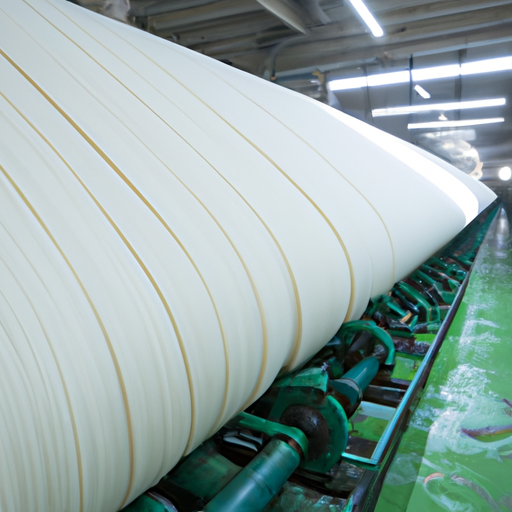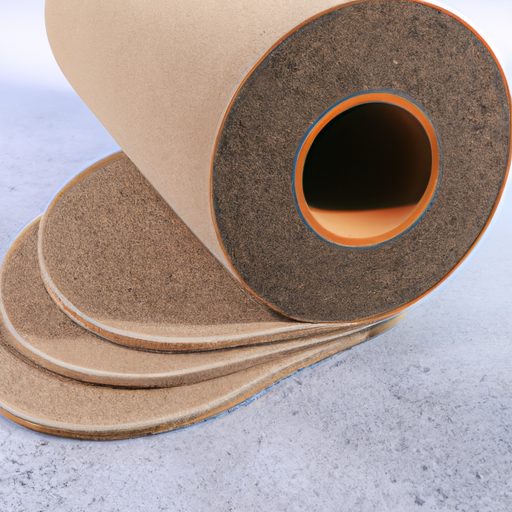The adhesive process for polyester and rayon blended fabrics is a Chinese factory for felt rolls,
Exploring the Benefits of Adhesive Processes for Polyester and Rayon Blended Fabrics
Adhesive processes are becoming increasingly popular in the textile industry, particularly for polyester and rayon blended fabrics. This article will explore the benefits of using adhesive processes for these fabrics, as well as the potential drawbacks.
Adhesive processes involve the application of a bonding agent to the fabric, which is then cured or dried to create a strong bond between the fibers. This process is often used to join two pieces of fabric together, or to attach a decorative element to the fabric. Adhesive processes are particularly beneficial for polyester and rayon blended fabrics, as they provide a strong bond that is resistant to wear and tear.
One of the main benefits of using adhesive processes for polyester and rayon blended fabrics is that it eliminates the need for stitching. This can save time and money, as well as reduce the risk of fabric damage due to needle holes. Additionally, adhesive processes can be used to create a seamless finish, which is often desirable for certain types of garments.
Another benefit of adhesive processes is that they can be used to create a variety of decorative effects. For example, adhesive processes can be used to create appliqués, patches, and other decorative elements. This can be a great way to add a unique touch to a garment without having to use traditional stitching methods.
Finally, adhesive processes can be used to create a waterproof seal. This can be beneficial for garments that are intended to be worn in wet conditions, as it can help to keep the fabric from becoming saturated with water.
While adhesive processes can offer many benefits for polyester and rayon blended fabrics, there are also some potential drawbacks. For example, adhesive processes can be difficult to remove, and may require the use of solvents or other chemicals. Additionally, adhesive processes can be time-consuming and require specialized equipment. Finally, adhesive processes may not be suitable for certain types of fabrics, such as those that are prone to stretching or shrinking.
Overall, adhesive processes can offer many benefits for polyester and rayon blended fabrics. They can be used to create a strong bond between two pieces of fabric, as well as to add decorative elements. Additionally, adhesive processes can be used to create a waterproof seal, which can be beneficial for certain types of garments. However, it is important to consider the potential drawbacks of adhesive processes before using them, as they may not be suitable for all fabrics.
How Chinese Factories are Revolutionizing the Felt Roll Industry
The felt roll industry has seen a revolution in recent years, thanks to the emergence of Chinese factories. These factories have been able to produce felt rolls of superior quality and at a fraction of the cost of traditional production methods. This has allowed companies to offer their customers a much wider range of felt rolls, at a much lower price.
The Chinese factories have been able to achieve this by utilizing advanced manufacturing techniques and materials. For example, they have developed a process for producing felt rolls with a much higher density than traditional methods. This allows them to produce felt rolls that are much more durable and resistant to wear and tear. Additionally, they have developed a process for producing felt rolls with a much finer texture, which makes them much more comfortable to use.
The Chinese factories have also been able to reduce the cost of production by utilizing more efficient production methods. For example, they have developed a process for producing felt rolls in large batches, which reduces the amount of time and labor required to produce each roll. Additionally, they have developed a process for producing felt rolls with a much higher level of precision, which allows them to produce felt rolls with a much higher level of accuracy.
Finally, the Chinese factories have been able to reduce the cost of production by utilizing more efficient materials. For example, they have developed a process for producing felt rolls with a much higher level of insulation, which allows them to produce felt rolls that are much more energy efficient. Additionally, they have developed a process for producing felt rolls with a much higher level of fire resistance, which allows them to produce felt rolls that are much safer to use.
Overall, the emergence of Chinese factories has revolutionized the felt roll industry. By utilizing advanced manufacturing techniques and materials, they have been able to produce felt rolls of superior quality and at a fraction of the cost of traditional production methods. This has allowed companies to offer their customers a much wider range of felt rolls, at a much lower price.
Analyzing the Advantages of Using Adhesive Processes for Polyester and Rayon Blended Fabrics in Manufacturing
Adhesive processes are becoming increasingly popular in the manufacturing of polyester and rayon blended fabrics. This is due to the numerous advantages that adhesive processes offer over traditional methods of manufacturing. Adhesive processes provide a number of benefits that make them an attractive option for manufacturers.
One of the primary advantages of using adhesive processes for polyester and rayon blended fabrics is the improved strength and durability of the fabric. Adhesive processes create a strong bond between the two fabrics, which helps to prevent fraying and tearing. This makes the fabric more resistant to wear and tear, and increases its lifespan. Additionally, adhesive processes can be used to create a variety of textures and patterns, which can be used to create unique and attractive designs.
Another advantage of using adhesive processes for polyester and rayon blended fabrics is the cost savings associated with them. Adhesive processes are typically less expensive than traditional methods of manufacturing, as they require fewer materials and less labor. This can help to reduce the overall cost of production, allowing manufacturers to pass on the savings to their customers.
Finally, adhesive processes are also more environmentally friendly than traditional methods of manufacturing. Adhesive processes require fewer chemicals and less energy, which helps to reduce the environmental impact of production. Additionally, adhesive processes are often more efficient than traditional methods, which can help to reduce waste and improve the overall efficiency of the manufacturing process.
Overall, adhesive processes offer a number of advantages for manufacturers of polyester and rayon blended fabrics. Adhesive processes provide improved strength and durability, cost savings, and environmental benefits, making them an attractive option for manufacturers.
